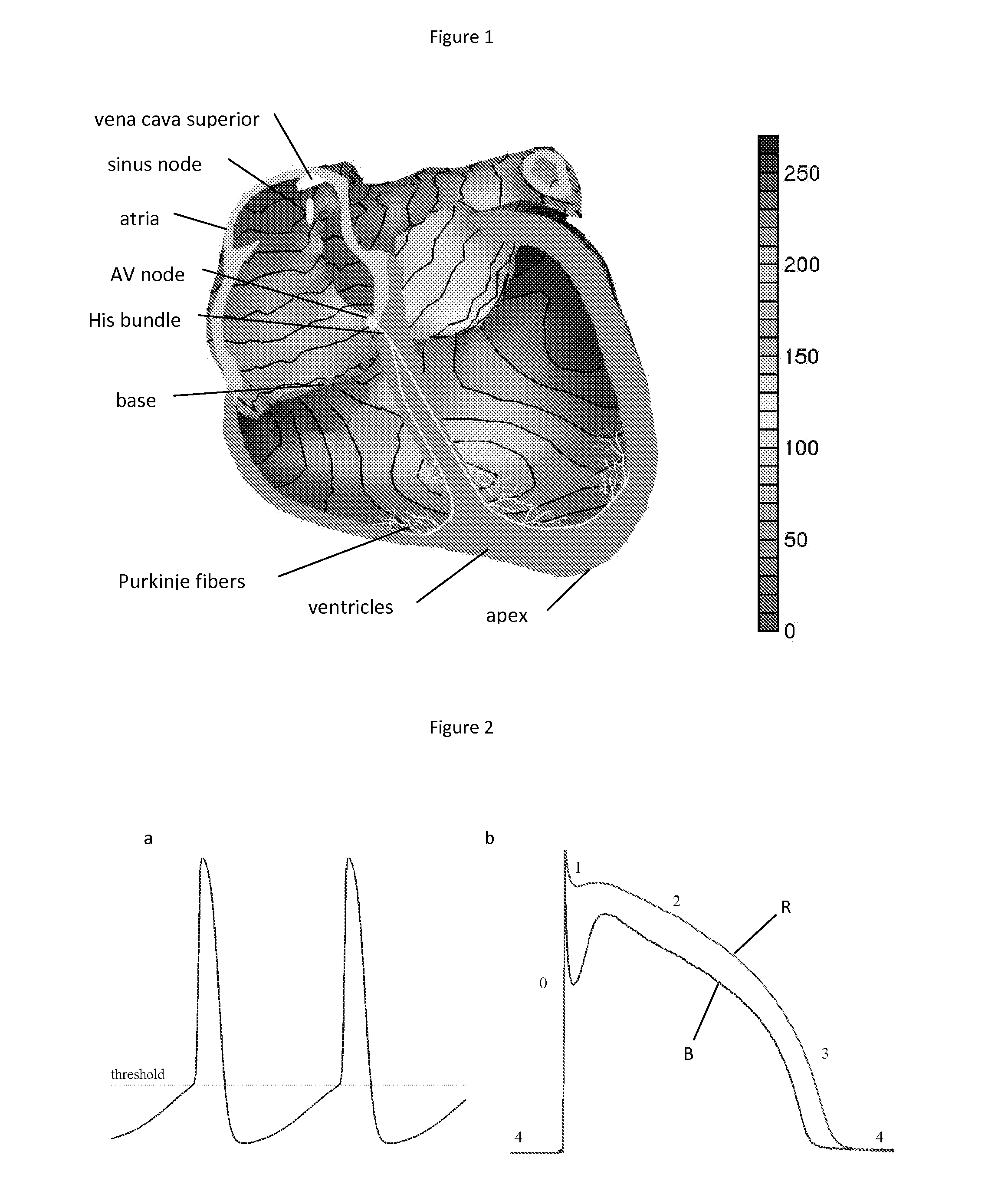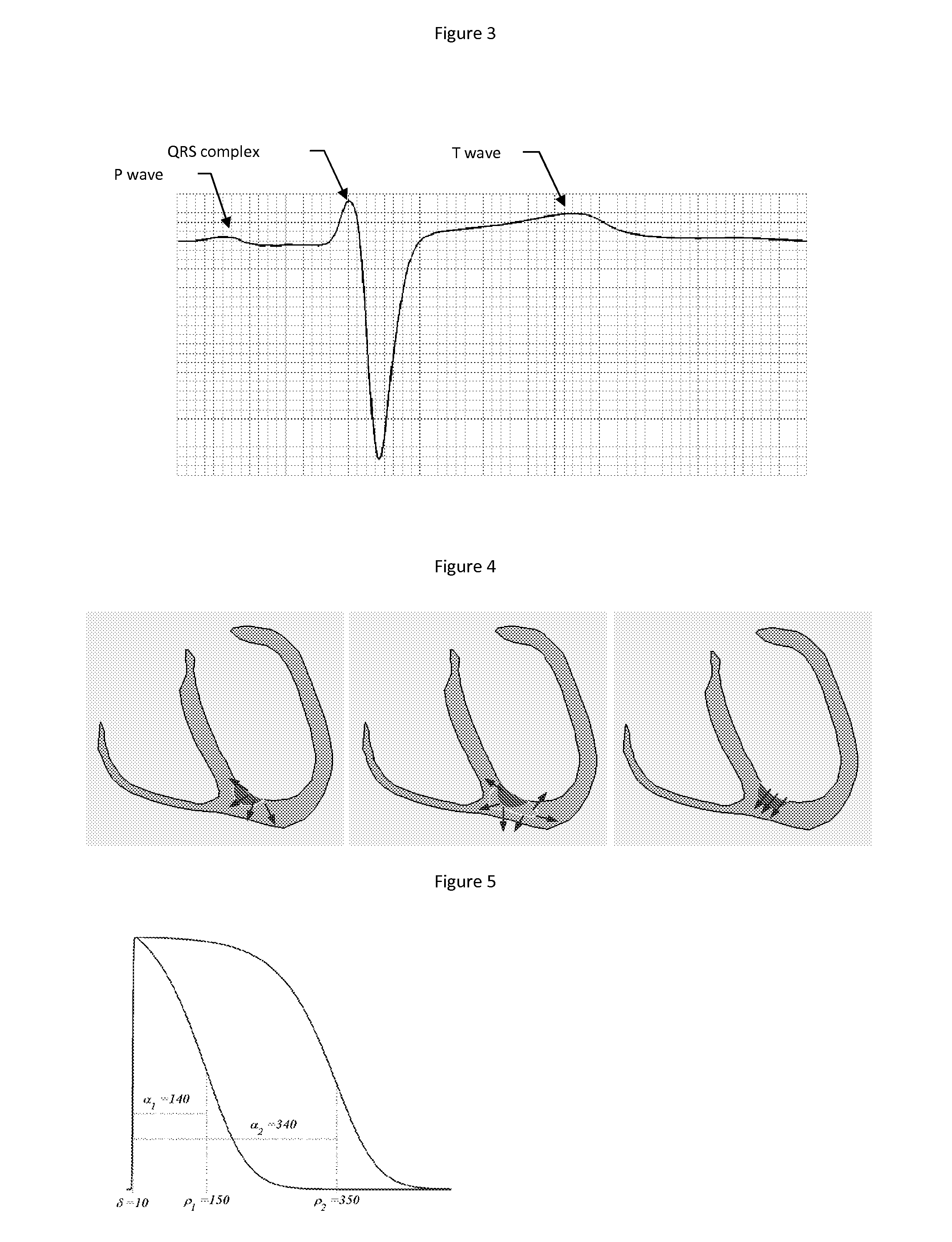Inverse Imaging of Electrical Activity of a Heart Muscle
a heart muscle and electrical activity technology, applied in electrocardiography, medical science, sensors, etc., can solve the problems of insufficient information to obtain an accurate estimate of the sequence of electrical activity of the heart muscle, the difficulty of relating the ecg signal directly to the actual electrical activation and recovery process of the heart, and the cumbersome work
- Summary
- Abstract
- Description
- Claims
- Application Information
AI Technical Summary
Benefits of technology
Problems solved by technology
Method used
Image
Examples
Embodiment Construction
[0027]Since the inception of electrocardiography [33,34] several methods have been developed aimed at providing more information about cardiac electric activity on the basis of potentials observed on the body surface. The differences between these methods relate to the implied physical description of the equivalent generator representing the observed potential field. The earliest of these are the electric current dipole, a key element in vectorcardiography [35,36] and the multipole expansion [37]. Neither of these source models offer a direct view on the timing of myocardial activation and recovery, or other electro-physiologically-tinted features.
[0028]From the 1970s onwards, the potential of two other types of source descriptions have been explored [38,39]. This development stemmed from increased insight in cardiac electrophysiology and advances in numerical methods and their implementation in ever more powerful computer systems. The results of both methods are scalar functions on...
PUM
 Login to View More
Login to View More Abstract
Description
Claims
Application Information
 Login to View More
Login to View More - R&D
- Intellectual Property
- Life Sciences
- Materials
- Tech Scout
- Unparalleled Data Quality
- Higher Quality Content
- 60% Fewer Hallucinations
Browse by: Latest US Patents, China's latest patents, Technical Efficacy Thesaurus, Application Domain, Technology Topic, Popular Technical Reports.
© 2025 PatSnap. All rights reserved.Legal|Privacy policy|Modern Slavery Act Transparency Statement|Sitemap|About US| Contact US: help@patsnap.com



